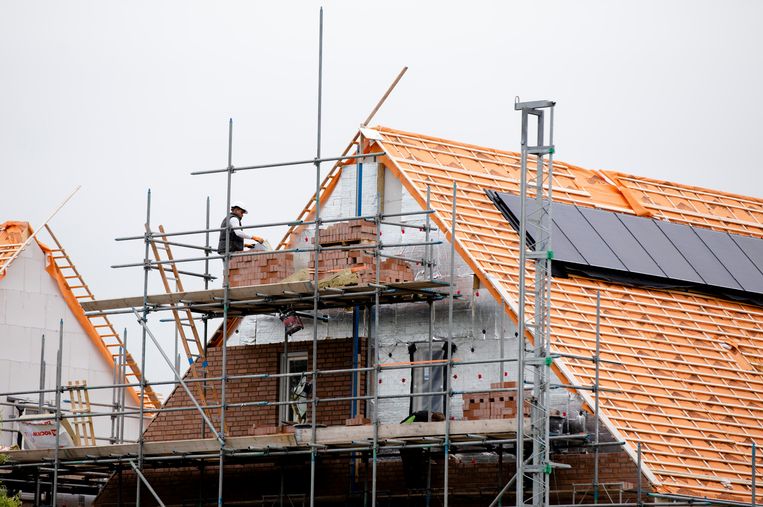Anyone who does not report renovation work to the Land Registry could be subject to a fine of up to €3,000. What do you have to declare, and what impact does this have on the amount of tax you have to pay?
What changes?
Anyone who does not report their home renovations to the General Directorate for Heritage Documentation, known as the Land Registry, is now subject to a fine of up to €3,000. This is much more than the previous maximum of 1,250 euros.
“It appears that the fines were not deterrent enough,” says tax law expert Mark Delanotte (UGent). “Because a lot of people do renovations without reporting them. Although that could also be due to ignorance.
Anyone carrying out refurbishment work that has an impact on cadastral income (KI) must report this within thirty days after the work is completed. If you need a building permit for work, the municipality will often provide you with a declaration form. This can also be done through an advertisement form on the FPS Finance website. Fines imposed on those who fail to do so vary depending on the new AI. For a KI of less than €745, the fine is €1,000. For an AI priced between 745 and 2,500 euros, this means 2,000 euros. For homes with an ID card of more than €2,500, the fine increases to €3,000.
The AI is an indicator of the value of the home and should match the annual rental income you would receive if you rented it out. Taxes such as property tax are calculated based on artificial intelligence.
What should you declare and what not?
KI changes if you carry out renovations that expand the living space or increase comfort. “An extension, or an attic that turns into an additional bedroom or bathroom, has an impact on the rental value, so the AI must change,” says Bart van Opstal from notaris.be.
For example, when renovating a kitchen or bathroom, this is not the case. “The reason is that the increase in comfort is limited because there was already a kitchen or bathroom,” says Van Opstal.
The KI also does not change for active renovation works, such as installing new insulation or glazing, installing solar panels or replacing the heating boiler with a more efficient one. For example, if you demolished a back extension that you didn’t rebuild, it might be interesting to report that, because the AI might fall down afterward. However, the KI is only modified if the amount changes by at least 15 percent or €50.
What is the impact on the amount of tax you have to pay?
The artificial intelligence depends on various factors such as the number of bathrooms, the presence of central heating, and the living area. “The habitable surface is the most decisive factor,” says economist Geert Goevaerts (University of Leuven). “All these properties are multiplied by coefficients that are not the same everywhere, which makes an accurate evaluation difficult. Now, the average KI is about 850 euros, and you have to do a lot of renovation to double that.
You can simulate the impact of higher AI on the amount of property tax you have to pay website From the Flemish government, which calculates the tax. For example, if you live in Antwerp and your KI increases from €850 to €1,000, you will no longer pay €773 in property tax, but €909. “The increase is always proportional,” says Chris De Sager, spokesman for the Flemish tax authorities. “For example, if KI increases by half, the property tax will also rise.”
An increase in the master key also has consequences for landlords, because they are not taxed on the basis of the actual rental income, but on the basis of the master key.
Who checks and how?
Both the federal government and municipalities are checking whether the AI of homes is correct. Municipalities have a special interest in correct AI, because a large portion of the property tax based on it flows to them.
“Inspectors can walk the road, but they are also increasingly using satellite images to detect, for example, an unmarked stretch,” says van Opstal. “However, not all municipalities monitor with the same seriousness. For some, it is higher on the priority list than others.
Inspectors also sometimes look at photos on real estate websites, research last month showed latest news. Although, according to FPS Finance, this is “not standard practice.”
Is this cadastral income correct?
Artificial intelligence has been under discussion for some time. The system dates back to the 1970s, when an army of officials widely determined the value of homes across the country. To this day, the AI is based on rent indexed in 1975. “It’s a fundamentally unfair system,” Delanotte says. In some neighborhoods, property values have risen dramatically since then. On the other hand, some of the elegant neighborhoods of the time became poor.
“Plus, officials weren’t as strict everywhere,” Delanot says. “For example, it is clearly estimated that there are fewer AI systems in some parts of the country than in others.” According to Delanote, if the government wanted to keep AI as a basis for taxation, it would be better to do the whole exercise again. “With all the information the government has today, this process should not be as impossible as it is often portrayed.”

“Total coffee specialist. Hardcore reader. Incurable music scholar. Web guru. Freelance troublemaker. Problem solver. Travel trailblazer.”







More Stories
Bitcoin price rises after new jobs data from US
European stock markets open higher | beursduivel.be
Russia’s oil imports to China decline